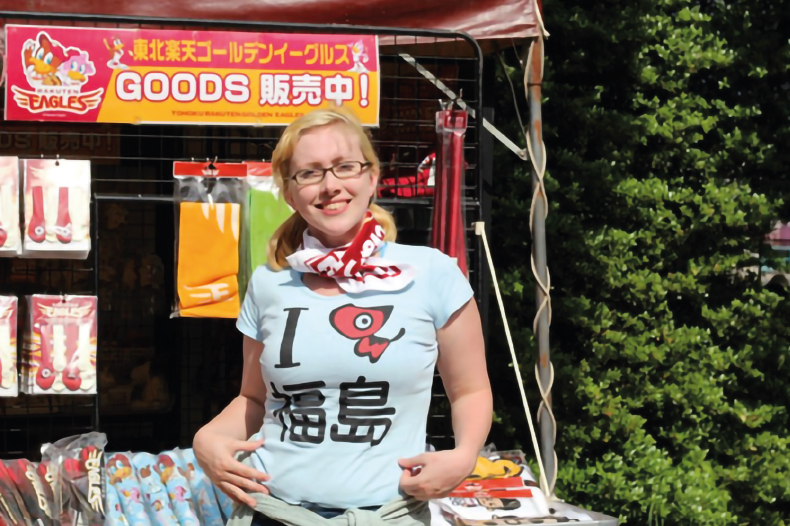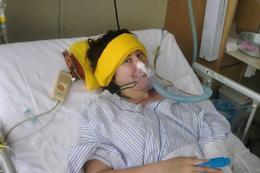Perspective: Becky Campbell offers full disclosure
“Disability is one part of my story, but it’s not the only part”: Becky Campbell offers full disclosure about her own hidden disabilities.

Did you know 20% of the UK population is disabled, often with conditions that don’t have physical signs (known as “invisible disabilities”)?
Or that, according to diversity data published by IPReg this year, 6% of trade mark attorneys consider themselves to have a disability as defined in the Equality Act 2010?
It’s likely that the real number is much higher too, since there are many reasons to keep an invisible disability hidden.
For example, half of leaders and managers say that they would feel uncomfortable employing or line managing someone with a neurodivergent condition such as autism, attention deficit hyperactivity disorder (ADHD), dyslexia or Tourette’s syndrome (TS).
What’s more, you may not know that I’m one of them – one of the one in seven people that half of leaders and managers would apparently be uncomfortable employing, as I am neurodivergent.
That particular statistic puzzles me, as I believe my different way of thinking has been as much an asset throughout my life as it has a hindrance.
Some people who are neurodivergent do not even consider themselves disabled, although my view is that it’s more of a mixed bag.
Like everyone, I have strengths and weaknesses. Mine are simply different from most people’s.
In fact, according to research published by The Institute of Leadership and Management last year, managers were most biased against hiring someone with ADHD or TS, yet David Beckham hasn’t been held back by his TS, and historians now believe that Mozart had the condition.
Meanwhile, ADHD is overrepresented among entrepreneurs, including IKEA founder Ingvar Kamprad and Virgin boss Sir Richard Branson.
Firms such as EY are capitalising on this. Its US branch compared neurodivergent and neurotypical professionals and found that while quality, efficiency and productivity of work were all comparable, neurodivergent employees excelled at innovation.
The firm has now founded a “Neuro-Diverse Centre of Excellence” in the UK that will hire neurodivergent individuals to help solve EY’s clients’ most challenging business problems.
Our profession, too, must foster an inclusive environment so that we can reap the same benefits. We don’t just benefit from innovation, we specialise in it.
And besides our colleagues, it’s likely that many of our clients are neurodivergent and/or disabled in some ways.
Actually, neurodiversity is just one part of my story. I often joke to friends that disabilities seem to be like Pokémon: you gotta catch ’em all.
My origin story
It’s funny how time flies when you’re having fun. And how it slows to a screeching halt when the car you’re in and the oncoming vehicle do the same.
During the summer of 2011, I was (I thought) a boringly healthy 24-year-old teaching English in Japan. My post-LPC gap year was quickly turning into a gap biennial, as I’d volunteered to move from the tropical south to the city of Fukushima, where the recent earthquake and nuclear disaster had led to a shortage of foreign teachers.
One week into my new job, my colleagues said they would drive me to the city to meet the board of education. We never made it, because another car drifted into our lane and hit us head-on.

At the hospital, emergency doctors had to operate quickly due to the risk of internal bleeding.
I awoke in the intensive care unit, an oxygen mask attached to my face and completely unable to move.
I fell unconscious again almost immediately and would wake only briefly over the next couple of days. I was diagnosed with a perforation of the small intestine, a lung contusion, a broken clavicle and a fractured thumb joint.
Thanks to the excellent treatment I received from my Japanese doctors, I made a (pretty much) full recovery.
Then some follow-up investigations for persistent back pain revealed that I wasn’t quite as healthy as I thought: I had mild scoliosis and a degenerated disc in my lower back.
The most recent part of the puzzle has been hypothyroidism, the early symptoms of which I’d put down to ageing or the rest of my medical history.
One scary morning, I awoke with loss of vision in one eye caused by extreme dryness. Another time, I was taken to A&E with nausea and dizziness during a heatwave.
A blood test then revealed that my thyroid, which regulates everything from body temperature and heart rate through to digestion and fertility, hasn’t been working properly.
I now take medication every morning to control my metabolism, and I will need to have tests for the rest of my life, but the treatment has given me my energy back.
In fact, the combination of hypothyroidism and neurodiversity means I often feel like I’m running a manual Ferrari while a non-disabled colleague has an automatic Ford Focus.
Opportunity for awareness
The pandemic has been a chance for us all to reflect and has brought about a lot more awareness of disability and health conditions, including mental health.
I’m grateful that in our profession organisations such as IP Inclusive are leading the way, supported by stakeholders like CITMA and the UK IPO.
This will hopefully lead to more people feeling comfortable talking about life with a disability, which will in turn encourage others to talk, as I have here.
All of us can be allies in this, by not judging based on physical appearance or assuming that someone is being difficult on purpose.
Above all, remember that disability does not mean inability.
People with disabilities may start from a different place due to their impairments, but often it is the way society is structured rather than their symptoms that limit them.
We’re all complicated and unique individuals; that’s one of the wonderful things about being human.
Disability is one part of my story, but it’s not the only part: I’m a female, Scottish, bisexual trade mark nerd obsessed with bunnies, Japan and gin. I am also disabled.
Becky will be speaking as part of our Disability History Month webinar on 24th November.
Read the full issue


